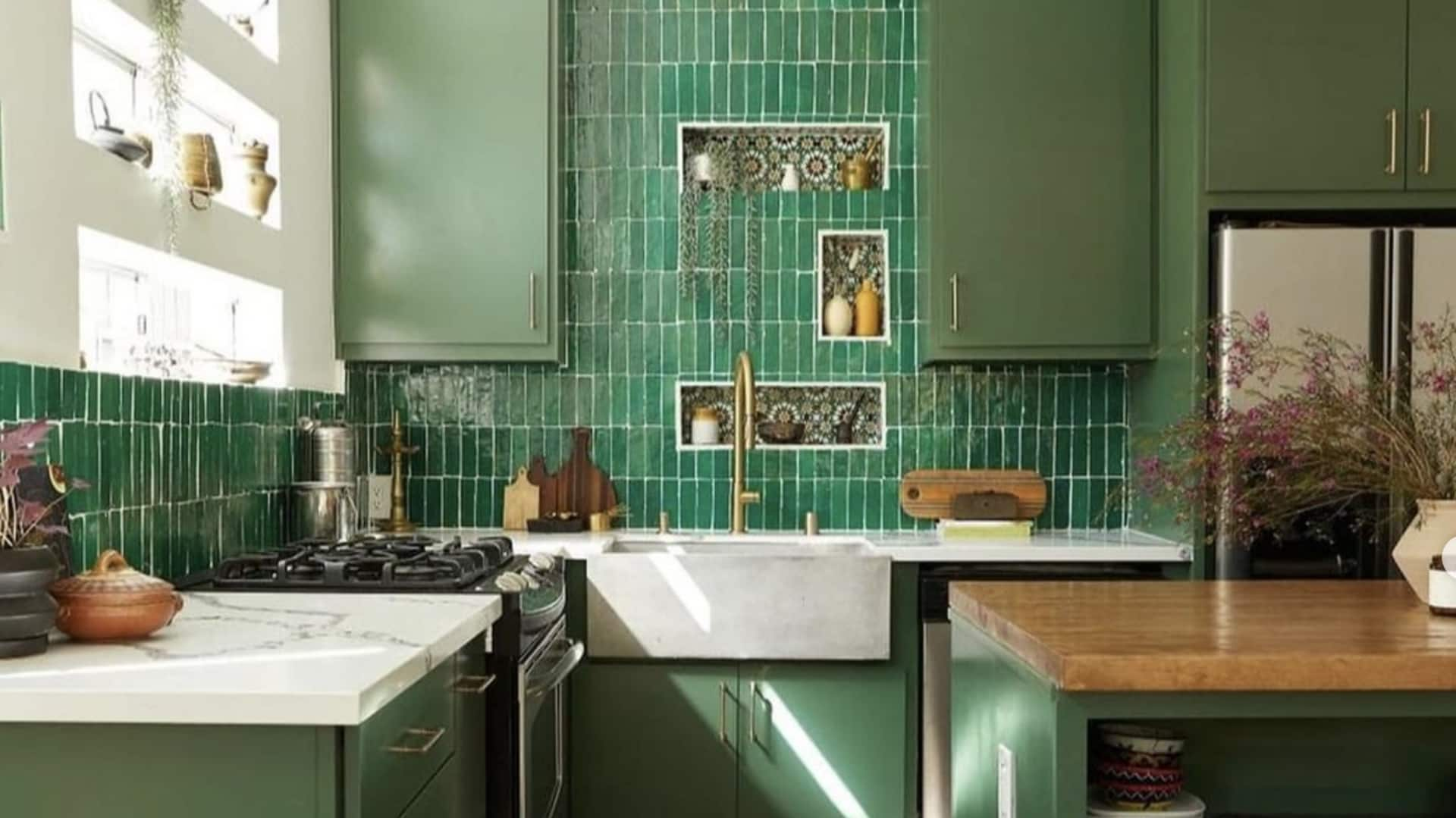
Moroccan zellige tiles: Timeless artistry for home interiors
What's the story
Moroccan zellige tiles are a mark of traditional craftsmanship, famous for their intricate geometric patterns and vibrant colors. Used in Moroccan architecture for centuries, these tiles lend a unique aesthetic to homes and public spaces. Their appeal lies in the handmade process that makes every tile unique, offering a different charm to any interior design. Here's a look at the artistry of these tiles and how they can jazz up modern home interiors.
Craftsmanship
The craftsmanship behind zellige tiles
Zellige tiles are made from the natural clay of Morocco's Fez region. The clay is kneaded by hand, molded, and then fired in kilns. After firing, each tile is hand-cut into precise shapes by artisans before being assembled into intricate mosaics. This painstaking process yields tiles that are not just visually arresting but also durable and long-lasting.
Versatility
Versatility in design applications
These tiles are versatile in application, making them appropriate for a range of interiors including kitchens, bathrooms, and living rooms. Their water-resistant nature makes them perfect for wet areas like showers or backsplashes. Plus, their reflective nature adds to the brightness of any room they are put on.
Colors & patterns
Color variations and patterns
Zellige tiles can be found in a rainbow of colors, from deep blues to earthy tones such as terracotta or ochre. The patterns often have geometric designs that can be customized based on personal taste or cultural influences. This enables homeowners to create personalized spaces that reflect their taste while keeping it authentically Moroccan.
Maintenance tips
Maintenance tips for longevity
To keep zellige tiles looking beautiful over the years, ensure regular cleaning with mild soap and water. Avoid harsh chemicals, as they may damage the glaze on these handcrafted pieces. Sealing grout lines from time to time prevents moisture absorption, which may lead to discoloration or mold growth over time.